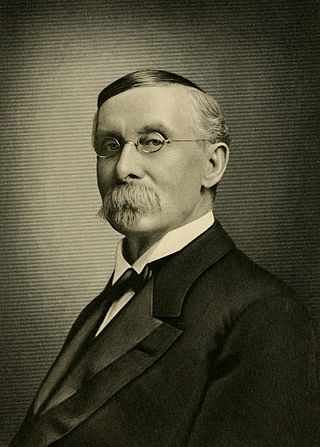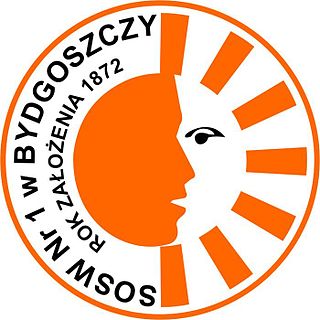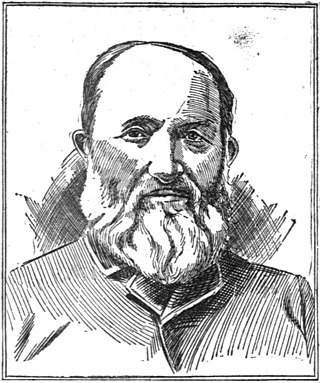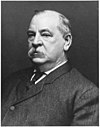
Samuel Gridley Howe was an American physician, abolitionist, and advocate of education for the blind. He organized and was the first director of the Perkins Institution. In 1824 he had gone to Greece to serve in the revolution as a surgeon; he also commanded troops. He arranged for support for refugees and brought many Greek children back to Boston with him for their education.
Perkins School for the Blind, in Watertown, Massachusetts, was founded in 1829 and is the oldest school for the blind in the United States. It has also been known as the Perkins Institution for the Blind.

Frances Jane van Alstyne, more commonly known as Fanny J. Crosby, was an American mission worker, poet, lyricist, and composer. She was a prolific hymnist, writing more than 8,000 hymns and gospel songs, with more than 100 million copies printed. She is also known for her teaching and her rescue mission work. By the end of the 19th century, she was a household name.

The Columbia University College of Physicians and Surgeons is the medical school of Columbia University, located at the Columbia University Irving Medical Center in the Washington Heights neighborhood of Manhattan.

Johann Bernhard Basedow was a German educational reformer, teacher and writer. He founded the Philanthropinum, a short-lived but influential progressive school in Dessau, and was the author of "Elementarwerk", a popular illustrated textbook for children.
Thomas Braidwood (1715–1806) was a Scottish educator, significant in the history of deaf education. He was the founder of Britain's first school for the deaf.

The North Dakota School for the Deaf (NDSD) is a state-funded residential school located in Devils Lake, North Dakota that provides services to meet the educational needs of children who are deaf and hard of hearing. NDSD is under the direction, control, and management of the North Dakota Department of Public Instruction. The current superintendent of the school is Donna Sorensen.
The Grand Contraband Camp was located in Elizabeth City County, Virginia, on the Virginia Peninsula near Fort Monroe, during and immediately after the American Civil War. The area was a refuge for escaped slaves who the Union forces refused to return to their former Confederate masters, by defining them as "contraband of war". The Grand Contraband Camp was the first self-contained black community in the United States and occupied the area of the downtown section of the present-day independent city of Hampton, Virginia.
Grover J. "Russ" Whitehurst is the Herman and George R. Brown Chair and director of the Brown Center on Education Policy at the Brookings Institution. His research primarily focuses on program evaluation, teacher quality, preschools, national and international student assessments, reading instruction, education technology, and education data systems.
The system of education in Iceland is divided in four levels: playschool, compulsory, upper secondary and higher, and is similar to that of other Nordic countries. Education is mandatory for children aged 6–16. Most institutions are funded by the state; there are very few private schools in the country. Iceland is a country with gymnasia.

Frank Haven Hall was an American inventor and essayist who is credited with inventing the Hall braille writer and the stereographer machine. He also invented the first successful mechanical point writer and developed major functions of modern day typography with kerning and tracking.

Howard Hille Johnson was a blind American educator and writer in the states of Virginia and West Virginia. Johnson was instrumental in the establishment of the West Virginia Schools for the Deaf and Blind in 1870, after which he taught blind students at the institution's School for the Blind for 43 years.

The Halifax School for the Deaf was an institution in Halifax, Nova Scotia, Canada, which opened on 4 August 1856. It was the first school of the deaf in Atlantic Canada. There was later a dispute over who the true founder was, William Gray (1806-1881), a deaf Scottish immigrant who was the first teacher in the back room of a house in Argyle Street, or George Tait (1828-1904), another deaf Scot, who claimed to have been the driving force behind the establishment of the school. Gray was sacked in 1870 for being intoxicated and for threatening pupils with violence.
John Dennison Russ was an American physician and co-founder of the New York Institute for the Blind and The Children's Village with 23 others.

L. Braille Special educational centre for blind children is a specialized educational institution located at Krasinski street 10 in Bydgoszcz, Poland.

John T. Outhouse was the first public school teacher in Portland, Oregon. He taught in Portland from 1851 to 1853.

Edith Bryan was an English teacher of the deaf, who after teaching in England and Ireland, emigrated to Australia and became one of the educators who contributed to the development of Special Education in Queensland. Though trained in the oralist tradition, she supported the use of sign language and fingerspelling for teaching purposes. From 1901 to 1926, she was the head teacher of the school operated by the Queensland Blind Deaf and Dumb Institute. An activist, she pressed for the training of special education students to become mandatory, and fought for their teachers to be paid the same salaries as other teachers. From 1926 to 1937 she taught at the Queensland school where she became responsible for the courses for deaf students. After her retirement, she volunteered at the Edith Bryan Hostel, a facility that offered housing and medical assistance to deaf citizens. She is considered to be one of the two most influential pioneers of special education in Queensland.
The establishment of schools and institutions specializing in deaf education has a history spanning back across multiple centuries. They utilized a variety of instructional approaches and philosophies. The manner in which the language barrier is handled between the hearing and the deaf remains a topic of great controversy. Many of the early establishments of formalized education for the deaf are currently acknowledged for the influence they've contributed to the development and standards of deaf education today.
Thomas Mark Lucas was a British educator of the blind, founder of the Royal London Society for Blind People, and developer of the Lucas tactile alphabet system, an alternative to the Braille system of reading for the blind.

Samuel Akerly was an American physician, superintendent of the New York Institution for the Deaf from 1821 to 1831, and co-founder and president of the New York Institute for the Education of the Blind from 1831 to 1842.
















